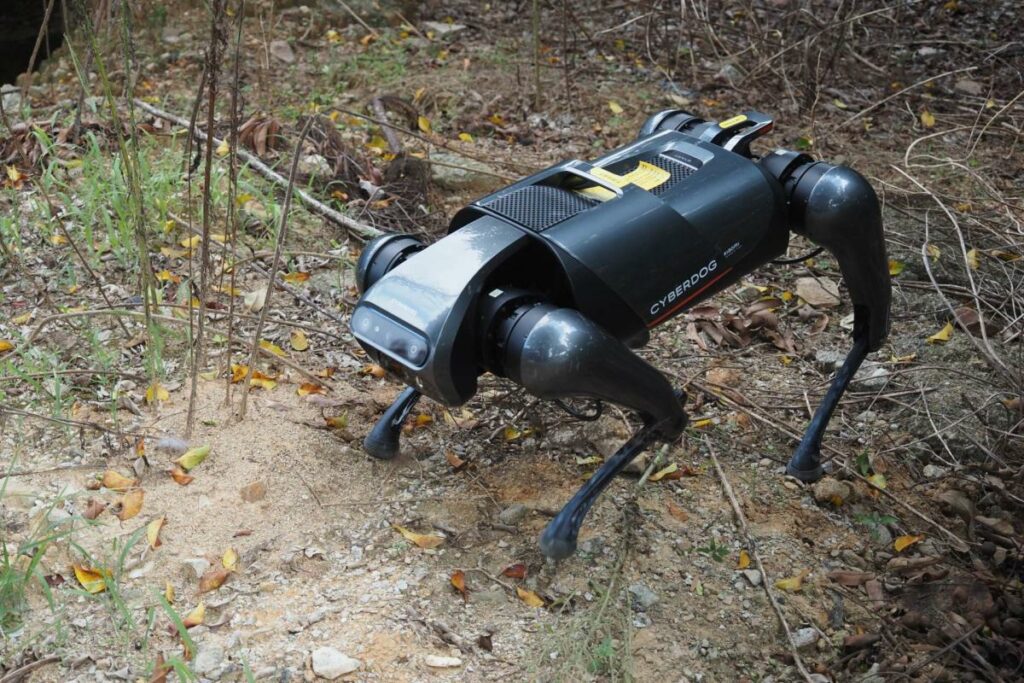A new robot dog developed by scientists is sniffing out invasive fire ants using artificial intelligence, according to a writeup by the Society of Chemical Industry in TechXplore.
The research team, spread across Brazil and China, trained the cyberpup to identify red imported fire ants, which are wreaking havoc in environments across the globe. The robot dogs are pretty good at their job, too. According to researchers, they identify three times more nests with greater precision compared to human inspectors.
The red imported fire ant is native to central South America, but it has established itself in the United States and Australia, and it has been reported in other parts of the world, like Malaysia, Hong Kong, and Trinidad and Tobago, per the University of Florida.
As invasive organisms, they have caused extensive environmental and economic damage, according to the Tech Xplore post. In the U.S. alone, the species is responsible for an estimated $6 billion in economic losses annually through impacts like reduced crop yields and damage to farm equipment, as reported in an article in the journal Ecosphere.
Red imported fire ants also expand their range rapidly, displacing local flora and fauna, as Eduardo Fox — one of the robot dog scientists — explained in TechXplore. For instance, in China, they have been a problem since at least 2003, decreasing the abundance of native ant species.
However, the new ant-identifying robots can help to more effectively scout for nests so that the trouble-making ants can be eradicated, thereby reducing their impacts on people and the environment.
Watch now: Alex Honnold shares clever productivity hack to maximize productivity, contentment
This is one of many attempts by scientists to control troublesome invasive species. For instance, an aggressive “stomp them” stance by state governments regarding spotted lanternflies seems to be yielding successful results in eradicating the pests, according to one study.
Animals and bugs aren’t the only type of invasives, though. Plants can also outcompete native greenery for moisture, sunlight, nutrients, and space, according to the U.S. Forest Service. Park officials and volunteers in California are fighting back against an invasive succulent known as the ice plant by scouring the coast and picking it on sight.
You, too, can make a difference when it comes to invasive plants by rewilding your yard with native species. This is not just better for the environment, but it can also help save you money and time on maintenance, lowering your monthly water bills, all while creating a healthier ecosystem for pollinators, which support our food supply.
As for the robo-dogs, corresponding author Zheng Yan said in TechXplore that the new technology also has potential to help support education surrounding the issue.
“Fire ants pose a serious threat in China, yet most people remain unaware of the dangers of invasive fire ant nests in public areas,” he said. “Therefore, sightings of robots tracking fire ant nests are likely to captivate the public and raise awareness about the presence of fire ants.”
Join our free newsletter for weekly updates on the latest innovations improving our lives and shaping our future, and don’t miss this cool list of easy ways to help yourself while helping the planet.
Source link : http://www.bing.com/news/apiclick.aspx?ref=FexRss&aid=&tid=66f396bf081945d5ba849c27952c0d80&url=https%3A%2F%2Fwww.yahoo.com%2Fnews%2Fresearchers-develop-robot-dog-combat-110009508.html&c=2248301890843153847&mkt=en-us
Author :
Publish date : 2024-09-23 00:00:00
Copyright for syndicated content belongs to the linked Source.
